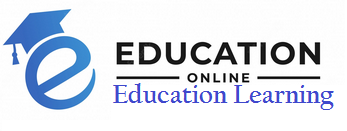Cervical cancer remains one of the leading causes of cancer-related deaths among women, particularly in low- and middle-income countries where access to regular screening is limited. According to the World Health Organization, more than 600,000 women are diagnosed each year, and over 300,000 lose their lives to the disease. The tragedy lies in the fact that cervical cancer is highly preventable and treatable if detected early. Screening methods like Pap smears and HPV testing are effective, but resource constraints, inconsistent access, and diagnostic delays limit their global reach.
Enter Goodnews Babade, a YRI Fellow, who is tackling this urgent global health challenge with an innovative, AI-driven approach. Their project, “A Multimodal Deep Learning Approach for Early Detection of Cervical Cancer Using Pap Smear Images and Molecular Biomarkers,” brings together multiple streams of medical data to create a single, unified diagnostic model. Unlike traditional methods that rely on one type of data, Goodnews’s system integrates:
- Pap smear cytology images, which capture the morphological details of cells.
- Non-invasive molecular biomarker signals (miRNA-2), which reveal biological changes linked to early cancer.
- Clinical and demographic metadata, providing additional patient context.
The innovation doesn’t stop there. To overcome the “black box” problem of AI—where models make predictions without explanation—Goodnews incorporated explainability tools like SHAP (Shapley Additive Explanations) and Grad-CAM (Gradient-weighted Class Activation Mapping). These tools allow clinicians to see why the model reached a given conclusion, highlighting which features or image regions influenced its prediction. In doing so, the system not only diagnoses but also builds trust with physicians.
The vision is unapologetically ambitious and perfectly aligned with what the YRI Fellowship exists to produce: high-school researchers building real, translational science that has the potential to change lives. By combining complementary data streams, Goodnews aims to improve sensitivity at the earliest stages of disease—when interventions are most effective—and to do it in a way that is equitable for low-resource clinics.
Inside the model, the integration is seamless. Cytology images provide the morphological context—the visual patterns that pathologists would traditionally examine under a microscope. miRNA-2 biomarkers contribute the molecular signal, catching subtler changes invisible to the eye. Clinical metadata ties the story together, ensuring that predictions account for demographic and patient-specific factors. The result is a holistic diagnostic system designed for earlier and more reliable detection, with interpretability built in from the ground up.
“This isn’t a class assignment,” one YRI mentor remarked. “This is research that could stand alongside professional labs. The caliber of work Goodnews produced shows exactly what happens when students are treated like real researchers.” With PhD-level mentorship, rigorous feedback loops, and milestone-driven accountability, YRI empowers students to go far beyond textbook learning and produce publication-grade science.
Goodnews’s north star is accessibility. Screening shouldn’t depend on a zip code or a hospital’s budget. That’s why their pipeline emphasizes scalability, low cost, and adaptability for clinics where bandwidth, computing power, or pathology infrastructure are limited. The model isn’t designed to live only in well-equipped labs—it’s being engineered with deployment in low-resource settings in mind. It’s research with conscience, reflecting a broader commitment to equity in global healthcare.
The project also underscores how YRI Fellowship cultivates innovation. Students are guided through experimental design, dataset selection, model validation, explainability, and pathways to impact. Weekly milestones ensure momentum, while mentors provide feedback that matches the rigor of professional research environments. The outcome is not accidental—it’s the product of a system built to unlock potential.
Parents, principals, and program directors often ask how YRI Fellows consistently launch projects this advanced while still in high school. The answer is simple: environment + expectations + execution. The Fellowship surrounds students with mentors who are active researchers, peers who push one another to aim higher, and a structure that rewards persistence and excellence. The expectation is not that students “learn about” research—it’s that they do research.
For Goodnews, that expectation became reality. Their work demonstrates how combining AI, molecular biology, and medical imaging can open new frontiers in early detection. More importantly, it shows that the solutions to global health challenges can come from anywhere—even from teenagers who refuse to be limited by age or convention.
As cervical cancer continues to devastate communities worldwide, breakthroughs like Goodnews’s offer hope. If such models can be refined, validated, and deployed at scale, millions of women could benefit from earlier diagnoses and life-saving interventions. It’s exactly the type of future-defining research the YRI Fellowship was created to foster.
If you want your student to build research that gets noticed by journals, conferences, and the world beyond school walls, join the next YRI Fellowship cohort. See how YRI turns talent into traction at yriscience.com.

